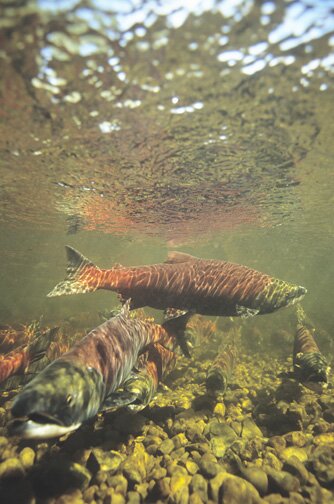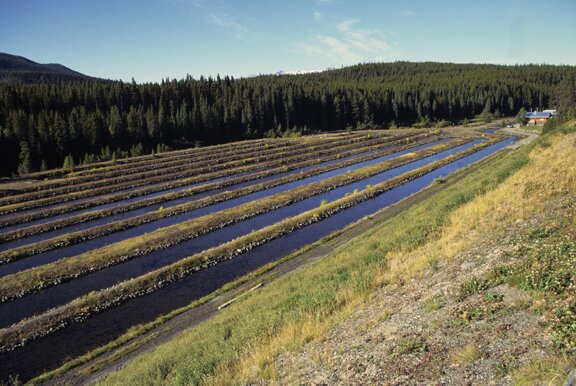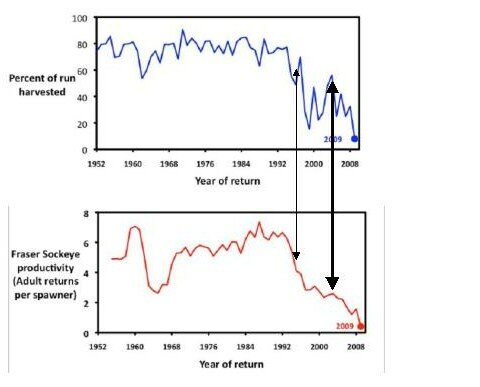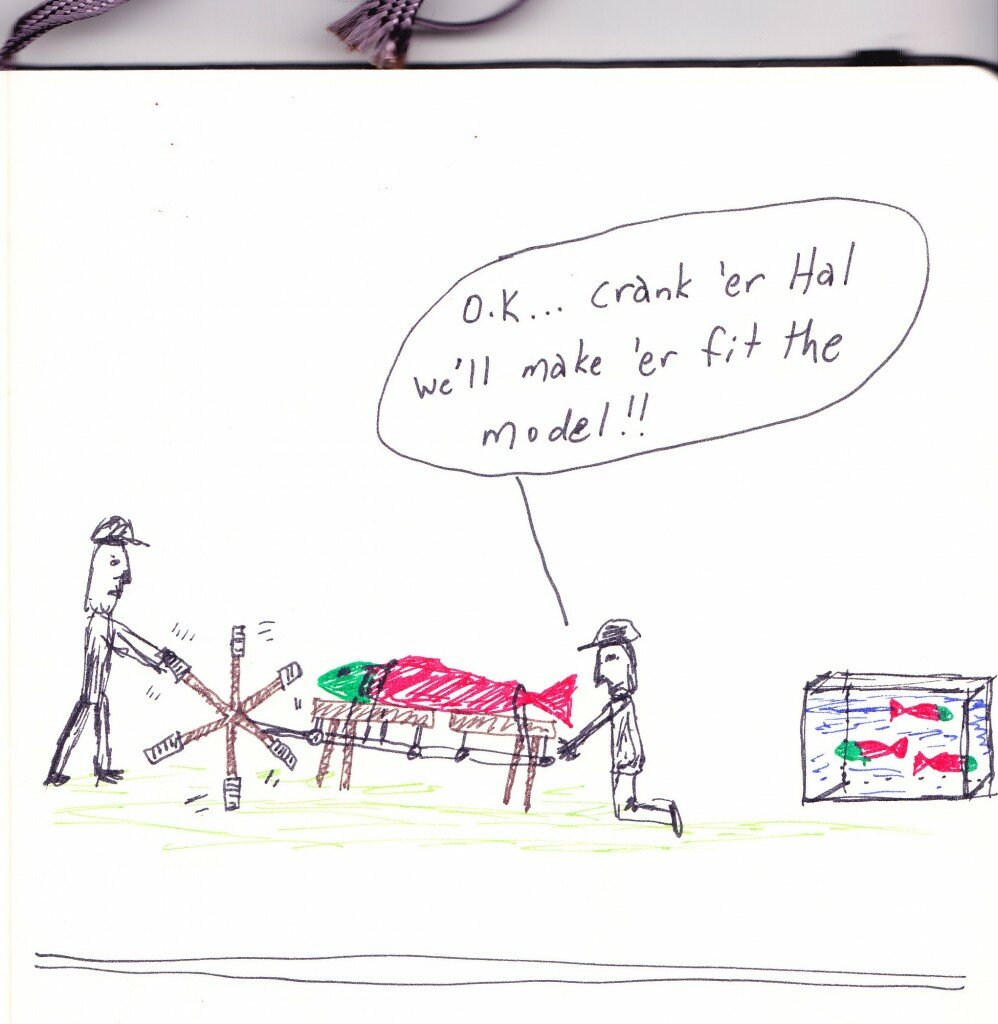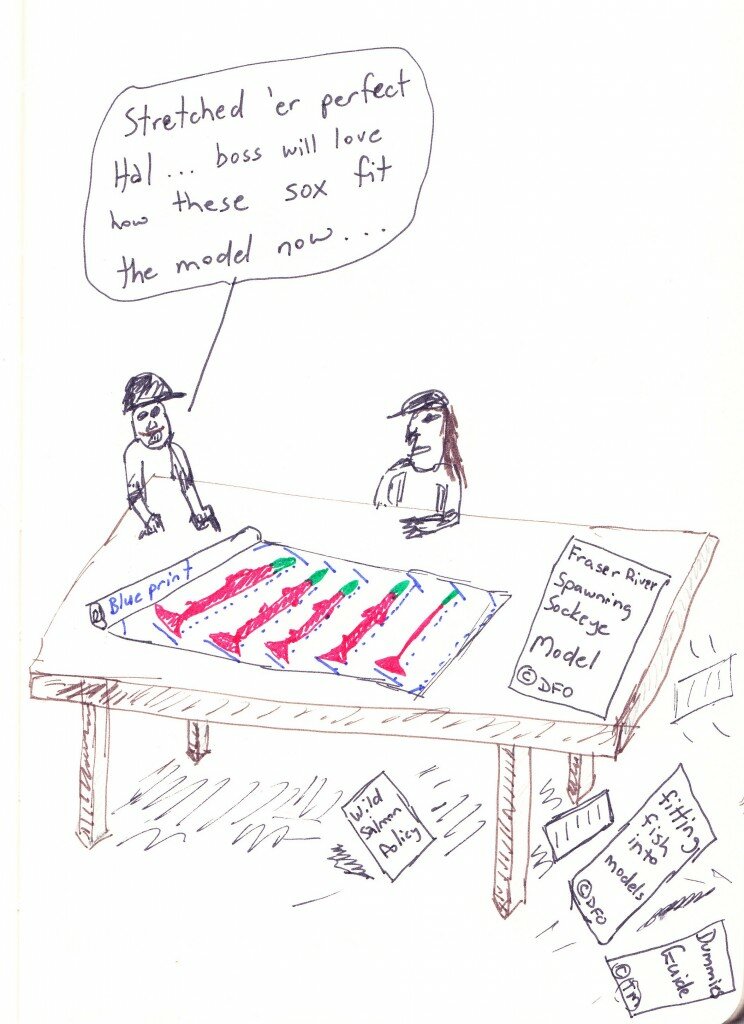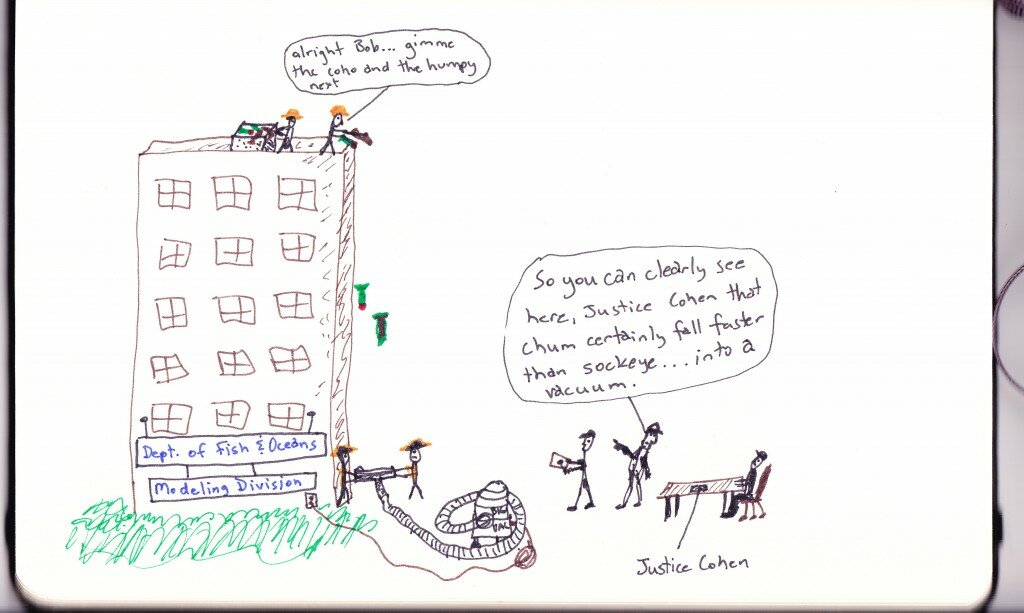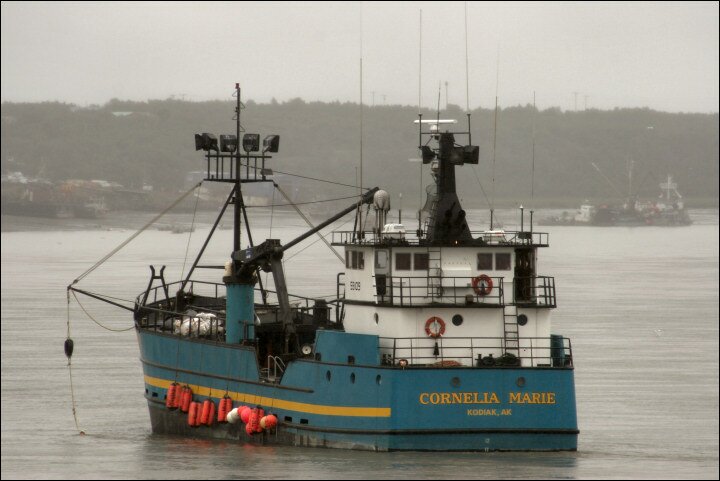This is a continuation of the — outlining the current Department of Fisheries and Oceans and Pacific Salmon Commission cookbook recipes for decimating troubled Fraser River sockeye stocks.
At the moment there is a $20 million (or so) judicial inquiry investigating the 2009 shockingly low returns of Fraser River sockeye.
One may not need to look too much further then the current cookbook approach to “managing” troubled sockeye stocks from the upper Fraser River.
These stocks are being “managed”/cooked into oblivion.
One might suggest it’s akin to throwing fish and steak on the same bar-b-q at the same heat and cooking the fish the same way as the steaks. The result…?
hockey puck fish… not much good to anything or anyone.
If the current DFO method of “managing” Fraser sockeye, specifically upper Fraser sockeye is not a Recipe for Extinction… then someone let me know what it is…
_ _ _ _ _ _
The last post…
…explained how the Bowron River and Nadina River sockeye that spawn in the eastern and western reaches of the upper Fraser River face dismal pre-season forecasts for 2011.
These two runs are grouped into the “Early Summers” which include several stocks from all across the Fraser watershed that all migrate into the river at approximately the same time. These sockeye stocks have been ‘grouped’ for “management” purposes.
(e.g. it is easier to devise ‘fishing plans’ on an aggregate of stocks that migrate into the river at similar times… as opposed to carefully trying to protect smaller, endangered runs).
Some of the other Fraser sockeye stocks that co-migrate with the Bowron and Nadina stocks are larger, healthier stocks that have relatively decent productivity in recent years and decent pre-season forecasts.
As a result, the aggregate total of all the runs combined means some limited fishing may occur on the Early Summers — however this means that the potential total allowable mortality predicted and permitted for the Early Summers in potential fishing plans could potentially wipe out an entire troubled sockeye run like the Bowron or Nadina — or both.
_ _ _ _ _ _
Late Stuarts and Stellak0 — Summer grouping
There is a similar story for the Late Stuarts and Stellako sockeye runs.
These two stocks of Fraser sockeye are grouped into the “Summers” — an aggregate based on run-timing a bit later into the Summer (hence the name).
There is a very concerning picture here.
Let’s look at the 50% probability pre-season forecast for the Summer stocks:

Summers -- 50p forecast
This shows a total run size forecast for the four “Summer” stocks — all grouped together — of a little over 1.4 million sockeye.
The Chilko run (west of Williams Lake) is looking pretty decent with some green boxes in productivity and a run that appears to be within range of average (“mean”) run sizes.
The 50% probability suggests a run size of a little over 1.1 million, comprising almost 80% of the total “Summer” group returns.
The other Summer stocks…?
not looking so good!
The Late Stuart is showing a 50p pre-season forecast of only 41,000.
This is well below the mean run size on all cycles of well over 500,000.
And even on this cycle year, a mean run size of over 80,000.
_ _ _ _ _ _
Similarly for Stellako.
A 50p pre-season forecast on this stock of only 79,000.
The mean run size on all years is over 460,000.
Worse yet, 2011 should be an up year with a cycle average of just under 600,000!
_ _ _ _ _ _
Things don’t look good on these stocks…
…even…
…even if they were left entirely alone and no one went fishing.
However, DFO and the Pacific Salmon Commission — in their great wisdom — are proposing fisheries on the Summer aggregate/group that will allow up to 57% mortality on the overall group run size.
At the 50p forecast of 1.4 million fish — this equates to a potential catch of well over 800,000 Summer-run sockeye.
Yeah… that’s right… 800,000 sockeye are proposed to be caught as part of pre-season fishing plans.
_ _ _ _ _ _
Let’s take another look for a second at those numbers….
The total run size forecast for the Summer-grouping of Fraser sockeye at the 50% probability level is: 1,414,000.
Pre-season planning by DFO and the Pacific Salmon Commission is suggesting a target of 57% exploitation, which equates to over 800,000 Fraser Summer sockeye dead.
That means that — theoretically — both the Stellako and Late Stuart runs could have the entire runs captured in fisheries — as they only comprise together less than 10% of the total Summer grouping run size.
Their total run size is 120,000.
(remember this isn’t what is predicted to reach spawning grounds — this is just predictions for reaching the mouth of the Fraser).
With a predicted fishery exploitation of 800,000 — doesn’t seem all that difficult to consider that fisheries might catch every last Late Stuart and Stellako sockeye, or 120,000 sockeye.
_ _ _ _ _ _
Quesnel River stocks — Summer group
Not only that — factor in the one other “Summer” group stock — the runs that return to the Quesnel River (e.g. the famed Horsefly and Quesnel Lakes runs). The 50p forecast on these is only 153,000 (just over 10% of total Summer-run size)
And thus the potential fishery exploitation rate of 57% of the Summer group — over 800,000 fish — could potentially eradicate three of the four Summer stocks.
(these three runs comprise only about 20% of the total Summer group)
(And it must be remembered, as well, the “management adjustment” — or death en route to the spawning grounds — such as hot water, drought, disease, and so on, is not even factored in here… these fish face a gauntlet of threats trying to reach spawning grounds — let alone avoiding fisheries that are targeting a 60% exploitation rate)
How is this not a recipe for extinction?
_ _ _ _ _
This is the absolute absurdity of mixed-stock fisheries…
…DFO’s aggregate management (groups of stocks based simply on run-timing — not health of the stocks or geographic distribution), and a “salmon management system” that is based on limited information and fisheries-first — not conservation goals.
Worse yet… ask DFO if they have “escapement objectives” for runs like Stellako, Late Stuarts, Nadina, etc. — this means how many spawners do they guess they have to get onto the spawning grounds for each sockeye stock, just to meet conservation objectives (e.g. survival of the individual runs)?
They don’t know.
The escapement objectives for Fraser sockeye are also done by the aggregate groupings — e.g. Early Summers, Summers, etc. — so if particular runs like the Stellako and Late Stuarts disappear… it doesn’t really matter if other stocks within the groupings remain somewhat healthy.
Worse yet, DFO and the Pacific Salmon Commission only have enough information to track 19 individual Fraser sockeye stocks.
Estimates suggest there might have once been over 200 individual Fraser sockeye stocks, utilizing over 150 different spawning areas. (Other estimates suggest that total run sizes once reached numbers of over 160 million Fraser sockeye on a yearly basis…).
How is this current system not a recipe for extinction?
This cookbook has already cooked, baked, poached, decimated… call it what you want… numerous small, distinct Fraser sockeye stocks.
_ _ _ _ _
(Cohen Commission… hope you’re reading this… and looking into this vital issue… if this Recipe for Fraser Sockeye extinction does not come out in final reports… it’s largely a wasted $20 million — and we can all start writing the eulogy for upper, upper Fraser sockeye).

